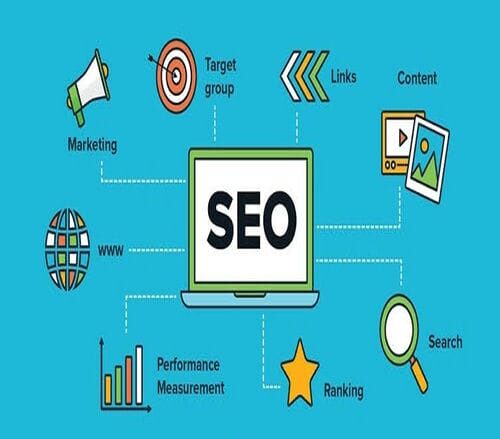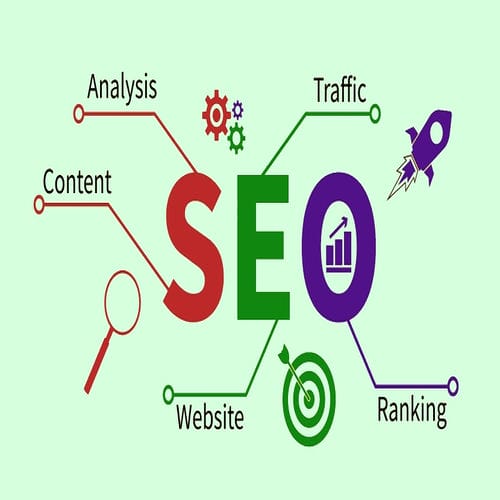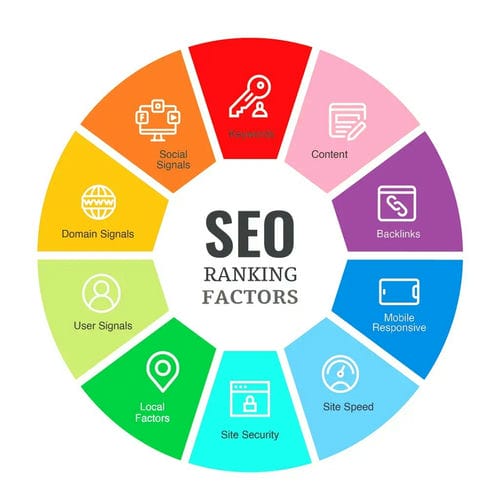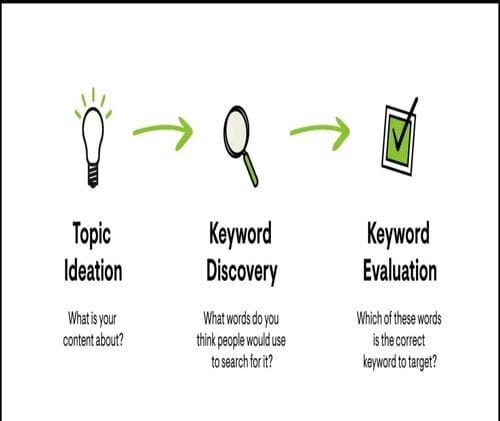How Search Engine Optimization work in 2024?
Are you struggling to get your website noticed by potential customers? Learning how to use search engine optimization effectively is crucial for optimizing your website’s visibility and attracting organic traffic.
Many businesses find it challenging to navigate the complexities of search engine optimization (SEO). But here’s the good news, understanding and implementing SEO can significantly boost your online visibility and drive more traffic to your site.
In this guide, we’ll walk you through everything you need to know about how to use search engine optimization effectively. We’ll break down the basics, explore essential SEO ranking factors, and provide practical tips for both on-page and off-page optimization.
We’ll clarify the differences and similarities between paid search and organic search, so you can make informed decisions about your digital marketing strategy.
By the end of this article, you’ll have a solid understanding of SEO and how it works, the benefits it offers, and even whether it requires any coding skills. This comprehensive guide will provide you with the knowledge and tools you need to succeed in the world of SEO.
How to Use Search Engine Optimization?
Search Engine Optimization (SEO) refers to the process of optimizing a website to enhance its visibility and ranking on search engine results pages (SERPs).
1. SEO and its Importance in Digital Marketing
SEO is a fundamental aspect of digital marketing strategies aimed at improving a website’s online presence. By optimizing various elements such as content, keywords, and metadata, SEO helps websites rank higher on search engine results, making them more accessible to potential visitors.
2. Why SEO Matters?
SEO is crucial for enhancing website visibility and attracting organic traffic. It ensures that websites appear prominently in search engine results, increasing the likelihood of users clicking through to the site.
This increased visibility translates to more website visitors, which is essential for business growth and establishing a strong online presence.
3. Importance of SEO for Website Visibility and Traffic
SEO plays a vital role in improving a website’s visibility on search engines, making it easier for users to find. By appearing higher in search results, websites receive more clicks and traffic, leading to increased exposure and potential customers.
4. Impact on Business Growth and Online Presence
Effective SEO strategies contribute to business growth by driving more qualified traffic to a website. Increased visibility and traffic result in higher brand awareness, improved online reputation, and ultimately, more conversions and revenue. As such, SEO is indispensable for businesses looking to thrive in the digital landscape.
Trending Articles:
Understanding SEO Basics
In the vast digital landscape, Search Engine Optimization (SEO) stands as a cornerstone of online success. Understanding the fundamentals of SEO is essential for any business or individual seeking to establish a strong digital presence.
1. Components of SEO
SEO encompasses various components, each playing a crucial role in enhancing a website’s performance. These components include on-page SEO, off-page SEO, and technical SEO.
- On-page SEO focuses on optimizing individual web pages for specific keywords and content relevance.
- Off-page SEO involves activities such as link building and social media promotion to boost a website’s authority and credibility.
- Technical SEO deals with the technical aspects of website optimization, ensuring proper indexing and crawling by search engine bots.
2. How SEO Works
Understanding the mechanics behind SEO is vital for implementing effective strategies. Search engines like Google use complex algorithms to analyze and rank websites based on numerous factors, including relevance, authority, and user experience.
Websites that align with these criteria are rewarded with higher rankings, leading to increased visibility and organic traffic.
3. The Importance of SEO
In today’s digital era, where online competition is fierce, SEO plays a pivotal role in determining a website’s success. Higher visibility on search engines translates to more website visitors, potential customers, and ultimately, business growth.
Therefore, grasping the basics of SEO is crucial for anyone looking to thrive in the competitive online landscape.
By understanding how SEO works and its significance in digital marketing, individuals and businesses can unlock the full potential of their online presence and drive sustainable growth.
SEO Ranking Factors
1. Key Factors for Search Engine Rankings
Achieving a high-ranking on search engine results pages (SERPs) require an understanding of the key factors that influence search engine rankings. These factors encompass various aspects of a website’s content, structure, and overall authority.
2. Content Quality and Relevance
One of the primary factors that search engines consider is the quality and relevance of the content. Websites with well-written, informative, and engaging content that addresses users’ search queries are more likely to rank higher in search results.
3. Backlinks and Website Authority
Backlinks, or inbound links from other reputable websites, are crucial indicators of a website’s authority and credibility. Search engines consider the quantity and quality of backlinks when determining a website’s ranking.
4. User Experience and Site Usability
User experience (UX) plays a significant role in SEO. Websites that offer intuitive navigation, fast loading times, and mobile responsiveness tend to rank higher in search results, as they provide a positive experience for users.
5. On-Page Optimization
Optimizing individual web pages for specific keywords and relevancy is essential for SEO success. Proper use of title tags, meta descriptions, and header tags helps search engines understand the content and context of each page.
Understanding and implementing these key ranking factors is crucial for improving a website’s visibility and ranking on search engines.
Must Read:
Keyword Research Essentials
1. Importance of Keyword Research
Keyword research is the foundation of any successful SEO strategy. By understanding the search terms that users enter into search engines, website owners can optimize their content to attract targeted traffic.
2. Tools and Techniques for Keyword Research
Various tools and techniques are available to conduct keyword research effectively. Platforms like Google Keyword Planner, SEMrush, and Ahrefs provide valuable insights into keyword search volume, competition, and related terms.
Additionally, analyzing competitors’ keywords can uncover valuable opportunities for optimization.
3. Identifying Short-Tail and Long-Tail Keywords
Keywords can be categorized into two main types. Short-tail and long-tail.
- Short-tail keywords are brief and generic terms with high search volume but intense competition.
- Long-tail keywords are more specific phrases that typically have lower search volume but higher conversion rates due to their specificity.
4. Analyzing and Selecting Keywords
Selecting the right keywords involves considering factors such as search volume, competition level, and relevance to your content or target audience. Aim for a balance between high-volume keywords with high competition and low-volume keywords with lower competition to maximize your website’s visibility.
5. Integration into Content Strategy
Once keywords are identified, they should be seamlessly integrated into your content strategy. Incorporate keywords naturally into website copy, headings, meta tags, and other on-page elements to optimize your content for search engines without sacrificing readability or user experience.
Effective keyword research is essential for driving targeted traffic to your website and improving your search engine rankings. By mastering the art of keyword research and implementation, you can enhance your website’s visibility and attract qualified leads and customers.
On-Page SEO Optimization
1. Maximizing Content Relevance
On-page SEO optimization focuses on fine-tuning individual web pages to enhance their relevance and visibility in search engine results. Crafting high-quality, relevant content that aligns with user search intent is paramount for on-page SEO success.
2. Importance of Title Tags and Meta Descriptions
Title tags and meta descriptions serve as the first point of contact between users and your website in search results. Crafting compelling and descriptive titles and meta descriptions can significantly improve click-through rates and drive more traffic to your site.
3. Utilizing Header Tags for Structure
Header tags (e.g., H1, H2, H3) play a crucial role in organizing and structuring your content for both users and search engines. Proper use of header tags not only improves readability but also helps search engines understand the hierarchy and relevance of your content.
4. Optimizing URL Structure
Creating SEO-friendly URLs that are concise, descriptive, and contain relevant keywords can enhance the visibility of your web pages in search results. Clear and user-friendly URLs make it easier for both search engines and users to understand the content of your pages.
5. Use of Internal Linking Strategies
Internal linking helps distribute link equity throughout your website and establishes a hierarchical structure for your content. Strategic internal linking can improve navigation, distribute PageRank, and enhance the overall user experience on your website.
By implementing these on-page optimization techniques, you can improve the relevance, visibility, and user experience of your web pages, ultimately driving greater success in your SEO endeavors.
Off-Page SEO Strategies
1. Building High-Quality Backlinks
Off-page SEO revolves around activities conducted outside of your website to improve its authority and relevance in search engine rankings. Building high-quality backlinks from reputable and relevant websites is one of the most crucial off-page SEO strategies.
2. Effective Link Building Techniques
Various techniques can be employed to acquire backlinks, including guest blogging, influencer outreach, and participation in industry forums and communities. The key is to focus on acquiring links from authoritative websites within your niche to maximize their impact on your website’s SEO performance.
3. Harnessing the Power of Social Media
Social media platforms provide an excellent opportunity to amplify your off-page SEO efforts. Engaging with your audience, sharing valuable content, and fostering relationships with influencers can lead to increased brand visibility and more opportunities for natural link acquisition.
4. Optimizing for Local SEO
For businesses targeting local markets, optimizing for local SEO is essential. Claiming and optimizing your Google My Business listing, obtaining local citations, and garnering positive reviews are crucial steps to improve your visibility in local search results.
5. Monitoring and Maintaining Off-Page SEO Efforts
Consistently monitoring your off-page SEO efforts and tracking the performance of your backlinks is essential for ongoing success. Regularly auditing your backlink profile, rejecting spammy links, and proactively seeking new link-building opportunities are essential for maintaining and improving your website’s authority and relevance in search engine rankings.
By implementing effective off-page optimization techniques and consistently building high-quality backlinks, you can enhance your website’s authority, relevance, and visibility in search engine results.
Technical SEO Essentials
1. Site Speed Optimization
Technical SEO focuses on optimizing the technical aspects of your website to improve its crawlability, indexability, and overall performance. Site speed optimization is a critical component of technical SEO, as faster loading times contribute to a better user experience and higher search engine rankings.
2. Ensuring Mobile Friendliness
With the increasing prevalence of mobile devices, ensuring that your website is mobile-friendly is essential for SEO success. Responsive design, mobile-friendly layouts, and optimized user interfaces are crucial for providing a seamless experience across all devices and improving your website’s visibility in mobile search results.
3. Creating a Logical Site Architecture
A well-structured site architecture is essential for both users and search engines to navigate and understand your website’s content.
Organizing your content into logical categories, using clear navigation menus, and implementing internal linking strategies can improve crawlability and indexability, leading to better search engine rankings.
4. Implementing XML Sitemaps and Robots.txt
XML sitemaps and robots.txt files are essential tools for guiding search engine bots and controlling how they crawl and index your website. Creating and submitting XML sitemaps ensures that search engines discover and index all of your web pages, while robots.txt allows you to specify which pages should or should not be crawled.
5. Fixing Crawl Errors and Technical Issues
Regularly monitoring your website for crawl errors and technical issues is crucial for maintaining its health and performance. Using tools like Google Search Console, you can identify and address issues such as broken links, duplicate content, and crawl errors to ensure that your website remains accessible and optimized for search engines.
Measuring and Analyzing SEO Performance
1. SEO Metrics and Tools
Measuring the performance of your SEO efforts is essential for understanding what works and what doesn’t. SEO metrics such as organic traffic, keyword rankings, and conversion rates provide valuable insights into the effectiveness of your strategies.
Utilizing tools like Google Analytics, Google Search Console, and third-party SEO software can help you track and analyze these metrics effectively.
2. Interpreting Data for Insights
Interpreting SEO data allows you to gain valuable insights into user behavior, website performance, and areas for improvement.
By analyzing trends, identifying patterns, and understanding user intent, you can make informed decisions about optimizing your website and content for better search engine rankings and user experience.
3. Continuous Improvement Strategies
SEO is an ongoing process that requires constant monitoring, analysis, and adjustment. By continuously evaluating your SEO performance and experimenting with new strategies, you can adapt to changes in search engine algorithms, user behavior, and industry trends, ensuring that your website remains competitive and visible in search results.

Advanced SEO Strategies
1. Expanding Your Keyword Research
Advanced SEO strategies involve delving deeper into keyword research to uncover untapped opportunities and niche markets. Exploring long-tail keywords, semantic search queries, and user-generated content can provide valuable insights into user intent and behavior, allowing you to tailor your content to meet their needs effectively.
2. Harnessing the Power of Structured Data
Structured data markup, such as Schema.org markup, helps search engines better understand the content and context of your web pages. Implementing structured data can enhance your search engine listings with rich snippets, knowledge panels, and other enhanced features, improving visibility and click-through rates.
3. Use of Advanced Link Building Tactics
Advanced link building tactics go beyond traditional methods to acquire high-quality backlinks and improve your website’s authority and credibility.
Techniques such as broken link building, skyscraper content, and influencer outreach can help you earn authoritative links and establish your website as a trusted resource in your industry.
4. Implementing Technical SEO Enhancements
Advanced technical SEO enhancements involve optimizing your website’s infrastructure, server configuration, and codebase to maximize crawlability, indexability, and performance.
Techniques such as site speed optimization, HTTPS implementation, and structured data markup can improve your website’s visibility and user experience, leading to higher search engine rankings and more organic traffic.
Local SEO Optimization
1. Understanding Local SEO
Local SEO optimization focuses on improving a website’s visibility in local search results, particularly for location-based queries. It is essential for businesses targeting local markets and seeking to attract customers from specific geographic areas.
2. Optimizing Google My Business
Google My Business (GMB) is a powerful tool for local SEO, allowing businesses to manage their online presence and appear in Google Maps and local search results.
Optimizing your GMB listing with accurate information, photos, and customer reviews can significantly improve your visibility and credibility in local searches.
3. Obtaining Local Citations
Local citations are online mentions of your business’s name, address, and phone number (NAP) on external websites and directories. Acquiring consistent and accurate local citations from reputable sources can improve your website’s authority and relevance in local search results.
4. Receiving Positive Reviews
Positive customer reviews play a crucial role in local SEO, as they signal trust and credibility to both search engines and potential customers. Encouraging satisfied customers to leave reviews on platforms like Google, Yelp, and Facebook can boost your online reputation and improve your local search rankings.
5. Implementing Location-Based Keywords
Incorporating location-based keywords into your website’s content, meta tags, and headings helps signal relevance to local search queries. Targeting keywords that include your city, neighborhood, or region can improve your website’s visibility for users searching within your target geographic area.
Paid Search vs. Organic Search
1. Understanding Paid Search
Paid search, also known as search engine marketing (SEM) or pay-per-click (PPC) advertising, involves placing ads on search engine results pages (SERPs) and paying for clicks or impressions. It offers immediate visibility and control over targeting options but requires ongoing investment to maintain.
2. Exploring Organic Search
Organic search refers to the natural, unpaid listings that appear on SERPs based on their relevance and authority. It relies on SEO techniques to improve visibility and attract organic traffic.
While it may take time to see results, organic search offers long-term sustainability and credibility without ongoing advertising costs.
3. Differences Between Paid and Organic Search
Paid search provides immediate visibility through ads, while organic search relies on optimization for long-term visibility. Paid search requires a budget for ad spend, while organic search involves investing time and effort into SEO.
Both channels have their advantages and drawbacks, and the most effective strategy often involves a combination of both paid and organic search tactics.
Conclusion
Gaining proficiency in search engine optimization (SEO) is pivotal for enhancing your online presence and attracting targeted traffic to your website. By understanding the intricacies of SEO and implementing effective strategies, businesses can improve their visibility on search engine results pages (SERPs) and drive organic traffic.
However, SEO is an ongoing process that requires dedication and continuous effort. Our team of experts can help you develop and execute a customized SEO strategy tailored to your specific goals and objectives.
If you’re ready to take your website’s SEO to the next level, consider partnering with Devtrain.co. Start optimizing your website for success today!





